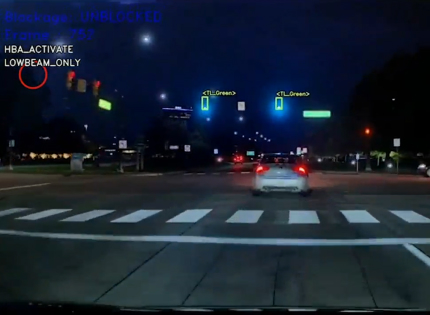Technology
SVNet
Cutting Edge AI Technology
SVNet is our core proprietary technology that constructs deep learning-based perception software utilizing data transferred from the camera and has excellent performance in recognizing and classifying various objects. It is an industry -recognized network that already holds 167 US patents for deep neural networks and has obtained ASPICE certification, and has already been applied to various commercial projects to demonstrate its performance.
The Most Advanced Deep Learning Algorithm
The high accuracy of SVNet can be achieved by reflecting a variety of state-of-the-art techniques in learning algorithms, rather than simple learning, such as meta-learning-based data sampling, feature-enhancing learning, hard example mining, and knowledge distillation. This allows SVNet to find as many target candidates as possible and refine them to deliver higher performance.
High Efficiency
SVNet is a lightweight solution using compact DNN-based algorithms that can minimize the amount of computation required per frame. This helps maximize efficiency by minimizing memory and power consumption required for computation. This allows our customers to maintain strong performance over 30 fps even on low-cost chipsets less than 2TOPS.
- SoC
- Low tier SoC (As low as 2TOPS)
- Function
- Vehicle Detection, Pedestrian Detection, Static Object Detection, Lane Detection, Road Boundary Detection, Traffic Sign Recognition, Light Source Detection, Scene Classification
-
Frame
per second - 30fps
Fully Optimized Modular Solution
SVNet can be fully optimized and deployed onto any hardware customer needs for their ADAS and self-driving car. And this will bring customers time to market benefit.

Flexible Solution to Support Any SoC
Taking advantage of its lightweight capabilities, SVNet has already been applied to more than 30 platforms for hardware-optimized performance, fully running on commercially available platforms as well as those in development stages.
Available on
Product
Product Overview
-
FrontVision

FrontVision detects various elements on the road such as vehicles, pedestrians, lanes, traffic lights, and traffic signs, utilizing the input from the front facing-camera. It enables users to develop autonomous driving features with different levels of autonomy, ranging from fundamental ADAS features required by Euro GSR/NCAP regulations to autonomous driving features of L2/L2+/L3 level above.
-
SurroundVision

SurroundVision detects a wide range of objects around the vehicle, including vehicles, pedestrians, parking slots, and curb stones, from surround view camera images as an input. With its highly accurate preception outputs, it enables users to develop safety features such as blind spot monitoring system as well as automatic parking assistance features that can work even in the challenging scenarios.
-
MultiVision

MultiVision utilizes a combination of front, rear, side, and surround-view (fish-eye) cameras, to provide comprehensive object information around the vehicle in both a public road and parking lot environments. It enables L3 or above ADAS and autonomous driving features in different operational design domain (ODD).


















